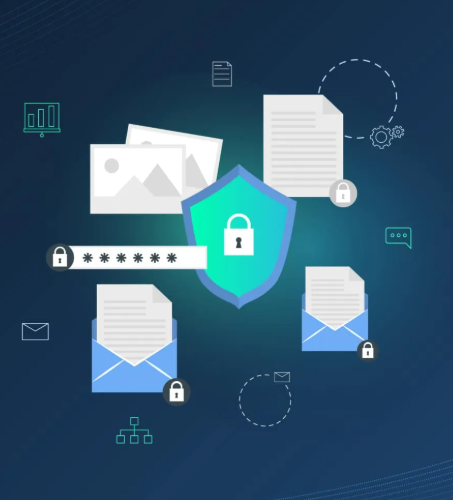Harnessing the Financial Value of Cyber Risk Quantification
- 220 Views
- admin
- 06/17/2025
- Cybersecurity
In today’s digital landscape, traditional methods of managing cyber risk—like intuition or static scoring systems—are no longer enough. Businesses require concrete, data-backed insights to make decisions that protect their operations and bottom line. Cyber risk quantification (CRQ) meets this need by translating security risks into financial terms, making them easier to understand and act upon at all levels of the organization.
Real-World Applications of Financially Quantified Cyber Risk
CRQ delivers tailored insights for a variety of business roles, turning cybersecurity from a technical issue into a strategic advantage.
For Risk Managers:
Quantifying cyber threats allows risk managers to better evaluate and prioritize risks. Instead of relying on subjective scores, they can present concrete financial scenarios.
Consider a case where a vendor poses a potential breach risk worth $1.5 million. A $50,000 investment in improved third-party controls could reduce this loss estimate to $840,000—a clear $660,000 return, supporting the need for stronger vendor oversight.
For Security Operations Teams:
CRQ data helps prioritize daily tasks based on financial exposure. If vulnerabilities on public-facing servers are projected to cause $750,000 in damage, patching these systems becomes an immediate focus—ensuring efforts align with real risk.
For CISOs:
CRQ equips security leaders with the ability to link cybersecurity needs to financial outcomes. When seeking funding, they can show how a tool like a $200,000 SIEM solution could cut incident losses by $150,000 per event by improving response time. Presenting this return on investment helps win executive support.
For CFOs:
By converting cybersecurity risks into potential financial losses, CRQ enables more accurate budgeting and insurance planning. For instance, if ransomware poses the greatest threat and exceeds current coverage, the CFO can adjust policies or pursue alternative risk strategies.
For the Board:
Boards want clear, high-level summaries of business risk. CRQ provides financial insight into top threats and the impact of mitigation. A quarterly report showing a 25% reduction in business email compromise risk—equating to $100,000 in avoided losses—demonstrates how security programs contribute directly to the bottom line.
Why Financial Translation of Cyber Risk Matters
Placing cyber risk in financial terms makes it easier to align security initiatives with broader business objectives. This approach:
- Improves Investment Decisions: Comparing the cost of controls against potential financial losses ensures resources go where they offer the highest return.
- Bridges Communication Gaps: Financial metrics are universally understood, helping security leaders communicate with executives and stakeholders more effectively.
- Supports Strategic Choices: With better data, organizations can evaluate which risks to mitigate, transfer, or accept based on cost-benefit analysis.
- Strengthens Budget Proposals: Demonstrating the financial downside of unaddressed risks justifies funding for critical security initiatives.
Revolutionizing Cybersecurity with Quantified Risk Insights
Using CRQ to guide risk operations enhances visibility and strategic planning across the enterprise.
Why Visibility Is Critical
Organizations can’t protect what they don’t fully understand. CRQ enables teams to:
- Pinpoint which threats present the highest financial risk.
- Measure the effectiveness of existing security controls.
- Understand how systems and assets interact to create risk.
- Track how risk levels evolve over time.
With this visibility, companies move from reactive defenses to a forward-thinking security model. They can detect vulnerabilities before they’re exploited and assign resources where they’ll have the greatest impact.
Integrating CRQ into Broader Risk Frameworks
CRQ doesn’t replace existing frameworks—it strengthens them. It adds a financial dimension that enhances the decision-making capabilities of widely used systems like:
- NIST Cybersecurity Framework (CSF): CRQ helps prioritize which of the framework’s functions should be addressed first based on financial impact—focusing, for example, on identifying and protecting high-value assets.
- ISO 27001: CRQ supports ISO’s risk treatment process by providing financial justifications for specific controls, making it easier to evaluate the true benefit of mitigation efforts.
Incorporating CRQ into these frameworks enables organizations to move from check-the-box compliance to truly risk-informed cybersecurity. It connects security practices to financial outcomes, making the value of those practices clear and measurable.
Conclusion
Quantifying cyber risk in financial terms empowers businesses to make smarter decisions, justify security investments, and align cybersecurity with organizational goals. As cyber threats grow more sophisticated, adopting CRQ is not just an improvement—it’s an essential evolution. It enables better risk management, enhances operational efficiency, and brings cybersecurity into clearer focus for stakeholders at every level.
Recent Posts
- How AI is Revolutionizing Architectural Design: A Look at Tools, Trends, and the Future
- Streamlining Cyber Risk Assessments Through Automation
- Understanding the Difference Between Blockchain and Distributed Ledger Technology
- Is Bitcoin Mining Still a Viable Venture in 2025?
- Exploring AI: Unveiling Possibilities, Challenges, and Future Implications

